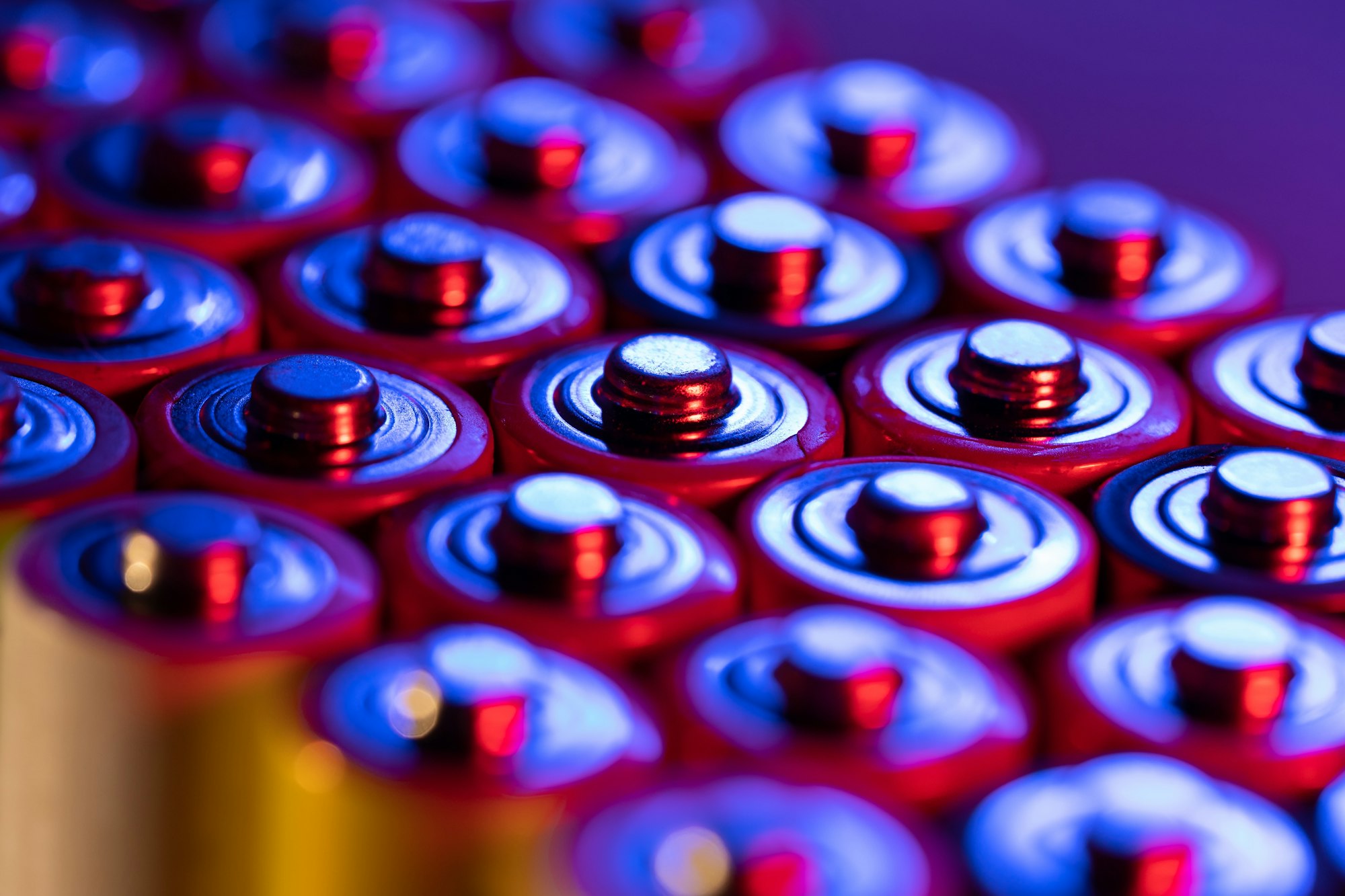
Understanding AA Batteries: A Comprehensive Overview
What Are AA Batteries?
AA batteries are everywhere—you’ve probably got a few powering something in your home right now. These small, cylindrical batteries (about 50.5 mm long and 14.5 mm wide) have become a go-to power source for all kinds of electronics, from remote controls and toys to digital cameras and portable gaming devices. Manufacturers are always improving their design to deliver even better performance.
With their standard size and 1.5-volt output (for non-rechargeable ones), AA batteries are incredibly versatile, fitting seamlessly into countless devices. They’re the unsung heroes of modern life, quietly keeping everything running—whether it’s your electric doorbell, a portable fan, or even your wireless mouse.
From household staples like wall clocks and smoke detectors to personal gadgets like portable speakers, AA batteries are everywhere. Their reliability and versatility make them a key part of everyday convenience and even tech innovation.
Types of AA Batteries
AA batteries fall into two primary categories: rechargeable and non-rechargeable, each serving various needs, from electric doorbells to portable fans. Each type possesses unique attributes tailored to different needs and preferences, whether replacing a doorbell or a handheld fan. Non-rechargeable batteries, also known as primary batteries, are designed for single-use applications.
While rechargeable batteries may have a higher upfront cost, they can be recharged hundreds of times before needing replacement…
They are convenient for devices that do not require frequent replacement, such as remote controls or flashlights. Non-rechargeable AA batteries, typically made of alkaline or lithium, offer a high energy density and long shelf life, making them ideal for emergency situations or devices that may sit idle for long periods.
Rechargeable AA batteries, on the other hand, are built to be reused multiple times, offering a cost-effective and environmentally friendly alternative to disposable batteries. They are commonly made of nickel-metal hydride (NiMH) or lithium-ion, providing a steady power supply for devices like digital cameras, wireless keyboards, or children’s toys.
While rechargeable batteries may have a higher upfront cost, they can be recharged hundreds of times before needing replacement, leading to long-term savings and reduced waste.
When choosing between non-rechargeable and rechargeable AA batteries, consider the specific requirements of your devices and how often they are used. Non-rechargeable batteries are best suited for low-drain devices with infrequent use, while rechargeable batteries are ideal for high-drain devices regularly used.
Ultimately, both types of AA batteries offer reliable power sources for a wide range of devices, allowing you to customize your energy needs based on convenience, cost, and environmental impact.
| Feature | Rechargeable AA Batteries | Non-Rechargeable AA Batteries |
|---|---|---|
| Lifespan | Can be recharged hundreds to thousands of times. | Single-use; must be discarded after depletion. |
| Initial Cost | Higher upfront cost due to charger and batteries. | Lower upfront cost per battery. |
| Long-Term Cost | More cost-effective over time due to reusability. | More expensive over time due to frequent replacement. |
| Energy Capacity | Lower capacity (e.g., 2000–3000 mAh). | Higher capacity (e.g., 2500–3000 mAh). |
| Voltage | Typically 1.2V when fully charged. | Typically 1.5V when new. |
| Performance in Devices | May not perform as well in high-drain devices. | Better suited for high-drain devices. |
| Environmental Impact | Eco-friendly; reduces waste and resource consumption. | Generates more waste; less eco-friendly. |
| Convenience | Requires a charger and time to recharge. | Ready to use out of the package. |
| Maintenance | Requires periodic recharging and proper storage. | No maintenance required. |
| Shelf Life | Loses charge over time; must be recharged periodically. | Long shelf life; retains charge for years. |
| Common Types | NiMH (Nickel-Metal Hydride), Li-ion (Lithium-ion). | Alkaline, Lithium. |
| Use Cases | Ideal for devices with moderate to high usage (e.g., cameras, toys). | Best for low-drain devices (e.g., clocks, remotes). |
| Temperature Sensitivity | More sensitive to extreme temperatures. | Less sensitive to temperature fluctuations. |
| Availability | Widely available but less common in stores. | Extremely common and widely available. |
| Weight | Slightly heavier due to internal components. | Lighter in comparison. |
Key Takeaways:
- Rechargeable AA batteries are better for long-term use, cost savings, and environmental sustainability, but require a charger and may have lower voltage and capacity.
- Non-rechargeable AA batteries are more convenient for immediate use, have higher voltage and capacity, and are better for high-drain devices, but are less eco-friendly and costlier over time.
Best AA Rechargeable Batteries to Buy: Our Expert Review
Rechargeable AA Batteries: A Deeper Dive
Rechargeable AA batteries, including nickel-metal hydride (NiMH) and lithium-ion (Li-ion), offer a sustainable alternative to traditional battery solutions. Designed to be reused multiple times, they provide substantial cost savings over time.
Their chemistry allows them to store and deliver energy efficiently, with NiMH batteries offering capacities ranging from 1300 mAh to 2800 mAh. This versatility caters to a range of devices, particularly those that demand frequent usage.
One notable advantage of rechargeable batteries is their capacity for high cycle life. While typical alkaline batteries can deliver energy for approximately 40 hours in a high-drain device, a rechargeable NiMH battery can handle upwards of 500 cycles before significant performance degradation occurs, thereby contributing to both economical and environmental benefits.
Non-Rechargeable AA Batteries: An Introduction
Non-rechargeable AA batteries, predominantly alkaline, are meticulously optimized to deliver a short-lived but robust power solution. They generally provide a higher initial voltage, which can be advantageous for devices requiring a quick energy surge. Alkaline batteries excel in lower-drain applications and are often favored for flashlights, clocks, and other devices that operate sporadically.
These batteries, however, are not designed for multiple uses. Once depleted, they cannot be rejuvenated and must be discarded, presenting both practicality and potential environmental concern regarding waste generation.
Energizer AA Batteries Double A Max Alkaline Battery, 24 Count
Key Differences Between Rechargeable and Non-Rechargeable AA Batteries
Several factors delineate rechargeable from non-rechargeable batteries, focusing primarily on energy source, chemistry, cost analysis, performance metrics, and environmental impact, as highlighted by various manufacturers.
Energy Source and Chemistry
The chemistry behind these batteries is a pivotal factor in their operation, influencing their compatibility with different devices like AAA battery fans and doorbells. Rechargeable AA batteries, such as Li-ion and NiMH, employ materials that enable electron flow through chemical reactions that can be reversed. In contrast, non-rechargeable alkaline batteries utilize a single-use chemical reaction that ceases once the reactants are exhausted, necessitating disposal rather than recharge.
Lithium-ion vs. Alkaline
When pitted against alkaline batteries, lithium-ion batteries demonstrate superior energy densities and cycling capabilities. Alkaline batteries may initially provide a higher voltage, but lithium-ion and NiMH variants can sustain voltage levels longer throughout their use-phase. This can render them more effective in high-demand devices where power requirements are substantial.
Cycle Life and Charge Retention
Cycle life also highlights a significant disparity, affecting cost effectiveness and environmental impact, which batteries must be considered for. Rechargeable batteries typically maintain adequate charge retention across multiple cycles, while non-rechargeable options falter once depleted—resulting in increased waste over time as they solitaire in landfills.
Cost Analysis:
Initial Investment Considerations
The financial implications of investing in AA batteries differ markedly, taking into account elements like battery chargers and memory effects. Initial outlay for rechargeable batteries and their respective charging systems is relatively higher, thus demanding prudent consideration.
Long-term Savings with Rechargeable Options
However, the cost-efficiency of using rechargeable counterparts becomes evident. With the capacity to be reused hundreds of times, rechargeable batteries can translate into substantial savings for consumers accustomed to buying disposable batteries perpetually.
Performance Metrics:
Voltage Output and Energy Density Comparisons
Voltage stability is another cornerstone of battery performance. Rechargeable batteries maintain a consistent voltage output during usage, while non-rechargeable batteries exhibit a gradual decline, often requiring the use of a battery charger to maintain performance.
Discharge Rates for High-Demand Devices
For devices that exert high energy demands, such as digital cameras or gaming controllers, rechargeable batteries often outperform their disposable counterparts, providing sustained power under heavy load conditions.
Environmental Impact:
Waste Generation and Recycling Options

Environmentally, the impact of battery disposal illuminates the necessity for careful consideration. Rechargeable batteries reduce waste generation due to their longevity, whereas the incessant disposal of non-rechargeable batteries contributes significantly to landfill accumulation, exacerbating ecological detriment.
Carbon Footprint Considerations
Furthermore, a detailed analysis reveals that rechargeable batteries typically incur a lower carbon footprint over their life-cycle, chiefly due to decreased mining and manufacturing requirements associated with repeat usage.
Usage Scenarios: When to Use Each Type
Best Applications for Rechargeable AA Batteries
Rechargeable AA batteries are ideal for high-drain devices and frequent-use settings. Gamers using wireless controllers and households with power tools will find them the perfect power source, ensuring reliable performance without frequent battery changes.
Ideal Situations for Non-Rechargeable AA Batteries
Conversely, non-rechargeable AA batteries serve their purpose well in low-drain applications or instances where immediate availability is paramount—be it activating a smoke detector or powering a remote control for sporadic use.
Benefits of Rechargeable AA Batteries
The benefits of rechargeable AA batteries extend beyond financial savings—embracing notions of sustainability, convenience, and usability, especially when paired with a reliable battery charger. Their reusability directly correlates to reduced environmental impact, making them an ideal choice for eco-conscious consumers, particularly when used with a battery charger.
Cost-Effectiveness and Sustainability | By minimizing waste and optimizing energy consumption, the cost-effectiveness of rechargeable batteries emerges as a clear advantage over time, bolstered by efficient battery chargers. |
Convenience and Usability in Various Devices | Moreover, their usability across myriad devices further facilitates seamless integration into modern lifestyles, catering to diverse user needs. |
Longer Shelf Life and Reduced Waste | Rechargeable batteries’ extended shelf life diminishes concerns regarding disposal, subsequently bolstering their environmental viability. |
Benefits of Non-Rechargeable AA Batteries
While rechargeable batteries hold notable advantages, non-rechargeable options maintain distinct merits—particularly their reliability and immediate availability when needed.
Reliability and Immediate Availability | The immediate use state of non-rechargeable batteries appeals to those requiring an unambiguous power solution without the encumbrance of charging. |
Performance in Extreme Temperatures | Additionally, their robustness in extreme temperature conditions often surpasses rechargeable batteries, ensuring reliable performance in various environments. |
Simplicity and Ease of Use | Simplicity further characterizes non-rechargeable batteries: there’s no need for charging considerations or maintenance—just straightforward, plug-and-play use. |
Safety Concerns
When addressing safety, it is imperative to understand the potential risks associated with both battery types.
Risks Associated with Rechargeable Batteries
Rechargeable batteries can present risks like overheating, overcharging, and leakage if not handled properly.
Tips for Safe Rechargeable Battery Use
- Use the right charger: Always match the charger to the battery type and follow the manufacturer’s instructions.
- Avoid overcharging: Overcharging can cause overheating, leaks, or even explosions. Don’t leave batteries charging unattended, and remove them once fully charged.
- Store properly: Keep batteries in a cool, dry place, away from sunlight and extreme temperatures. Don’t store them near metal objects to prevent short circuits or fires.
- Check for damage: Regularly inspect batteries for swelling or leaks. Stop using them if you notice any issues.
- Recycle responsibly: Dispose of old or damaged batteries properly to protect the environment.
By following these steps, you can use rechargeable batteries safely and effectively!
The Lowdown on Safely Disposing of AA Batteries
Let’s talk about something that’s probably been on your mind (or should be): disposing of AA batteries. You might be thinking, “What’s the big deal? I’ll just toss ’em in the trash.” But, hold up! Improper disposal of batteries can harm the environment, contaminate soil and water, and even pose a fire risk. Yikes!
Why is it important?
Batteries contain toxic materials like lead, mercury, and cadmium, which can leach into the environment if not disposed of correctly. If these toxins make their way into our soil, water, or air, they can cause serious harm to humans, animals, and the ecosystem as a whole. Plus, batteries can also cause fires if they’re not disposed of properly.
How to safely dispose of AA batteries:
Don’t worry, it’s easy! You can take a few simple steps to ensure that your AA batteries are disposed of in a responsible way.
Here’s what to do:
- Check with your local authorities: Contact your local waste management agency to see if they have specific guidelines for disposing of batteries. Some communities have special collection programs or facilities for hazardous waste.
- Take them to a recycling center: Many retailers, such as Home Depot, Lowe’s, and Best Buy, offer battery recycling programs. You can also search online for “battery recycling near me” to find a local recycling center.
- Participating retailers: Some retailers, like Staples and Office Depot, have designated bins for collecting batteries.
Steps to safely dispose of AA batteries:
- Remove any protective coverings or tape from the batteries
- Sort batteries by type (alkaline, nickel-cadmium, nickel-metal hydride, etc.)
- Place batteries in a sealed plastic bag or wrap them individually in tape to prevent them from coming into contact with other metals
- Take the batteries to a recycling center or participating retailer
- Do not crush or incinerate batteries, as this can cause fires or release toxic materials
- Keep batteries away from children and pets
That’s it! By following these simple steps, you’ll be doing your part to help protect the environment and keep your community safe. Happy recycling!
Potential Hazards of Non-Rechargeable Batteries
Non-rechargeable batteries are not without their concerns either; they may leak or rupture, especially when exposed to excessive heat or prolonged shelf life post-expiration. Vigilant attention to expiration dates can alleviate many of these potential hazards.
Bringing 25+ years of expertise in graphic design, marketing, and advertising to Nerdy Home Tech. Specializing in demystifying home automation and AI, I craft engaging content that simplifies complex tech for newbies and seasoned pros alike. Join me on a journey through the world of smart home tech!





